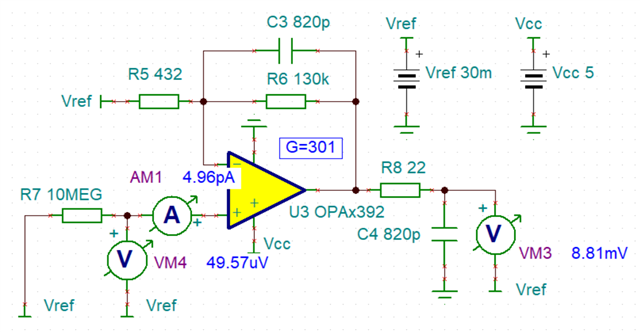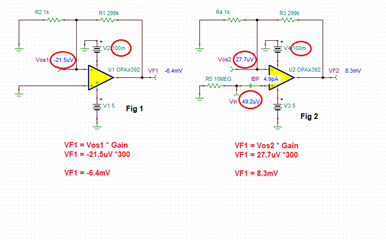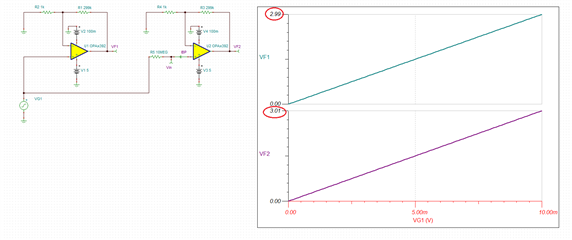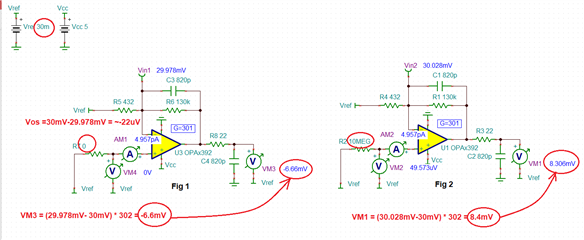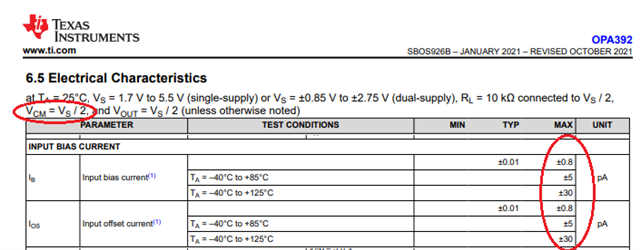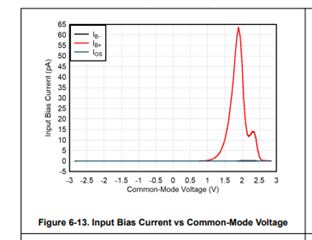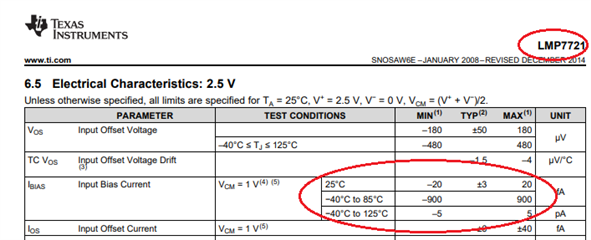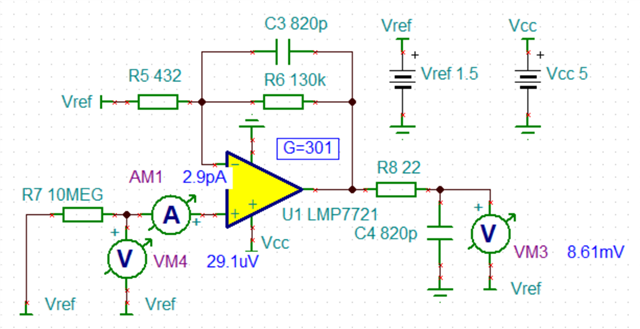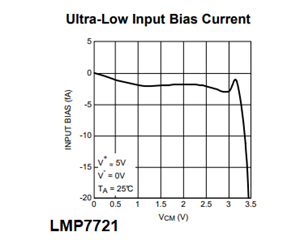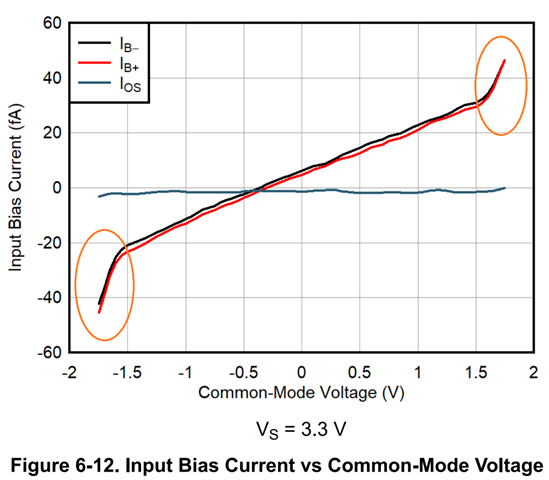Other Parts Discussed in Thread: TINA-TI, LMP7721, LMP7715, TMUX1104, OPA387, OPA397
I tried to design measuring amplifier capable of amplifying (300x) high impedance (10MΩ) 0-10mV DC voltage signal.
It seemed that OPA392, thanks to its super-low bias current (<<1pA) and low offset voltage (<10μV), would be a good choice for this task but even simple TINA DC analysis show high (8.8mV) output error. Error is way higher than what I expected.
How do I go about designing such amplifier?
Are there any typical/reference solutions or whitepapers on this subject available?
Most application examples show how to measure either differential or low impedance signal.
Please advise.
TINA screenshot and model attached.
